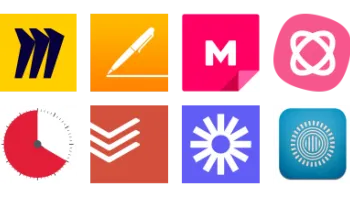Take a look inside 5 images
Kami
Pros: Easy to upload and share files; promotes collaboration and a paperless classroom.
Cons: Some features will require practice; limited use on mobile devices, and access to some of the best options requires a subscription.
Bottom Line: Kami is an effective way to promote student interaction with texts, authentic documents, and pictures.
Since Kami is an open-ended tool, the possibilities for use are diverse and far-reaching. Though it may be tempting, teachers should avoid using Kami as a worksheet substitution tool, as the opportunities for deeper learning are more enticing. Students can look at a piece of art or literature, write a critique, and compare their critique to published ones. Or they can annotate a poem alongside supporting historical documents and pictures in order to gain contextual understanding. Challenge students to be more information-literate by comparing different headlines for the same event and identifying bias, or provide historical documents followed by a close reading of critiques or editorials of the time period. Teach expository writing by having students pair up to write descriptions of objects, and have their partners draw the objects on a blank page. Upload a PDF of a famous inventor's journal and have students collaboratively annotate the scientific process the inventor used. Add videos and images to enhance the discussion.
Need documentation? Students can easily demonstrate their understanding of the writing process via peer-editing or self-editing while teachers add feedback via the Comment feature. And weekly article annotations about high-interest topics allow students opportunities to interact with text and spark engaging classroom discussions.
With Kami, teachers can share files with students, and students can annotate the files via track pad or keyboard shortcuts using several different features, including Highlight, Add Text, Draw On, Add Shapes, and more. Users can upload PDF documents, images, Google Docs or Slides, scanned textbooks, and more from their computer or from Google Drive -- or create blank documents or assignments via Google Classroom (with the paid plan). Kami automatically saves all files as they're uploaded, so this is a great option for teachers who want to go paperless. Teachers can also merge files so that students can work with multiple files on one screen. Sign up for Kami through Google or Microsoft account, or with an email address.
Certain features do not work on a tablet, such as moving the text boxes, highlighting phrases, or changing colors. In the basic version, teachers can send or embed a link enabling students to annotate a document, or they can save documents for students to access in Google Drive. Premium features include syncing with Google Classroom, Schoology, or Canvas to send out to or collect documents from up to 150 students. Additional premium features include adding images, videos, or blank pages to open documents along with a text-to-speech tool, which reads the documents to students.
Kami provides a way to bring context to lessons for nearly any subject. It supports critical reading by allowing teachers to guide and comment on students' annotations and by giving students a way to make connections between different documents. This is a fantastic way to provide visual aids to texts and allow students to interact with material and make meaningful connections. Add to that the fact that it's easy to convert documents to PDF files, and teachers have a very real tool to enable them to run a paperless classroom.
With Kami, teachers can upload files within seconds and share them with students. So while it's easy to upload lessons and materials that promote critical thinking and creativity, it will take some thoughtful planning to ensure that students are getting the most out of the materials. To get teachers started and show the possibilities, it would be nice to see Kami develop a lesson repository where teachers can share and vote on effective lessons. And while drawing is easier on a tablet versus a laptop or desktop, for most other features, mobile devices are not ideally suited for Kami. So, while the user experience can be a bit clumsy, overall Kami's easy to learn and use.















